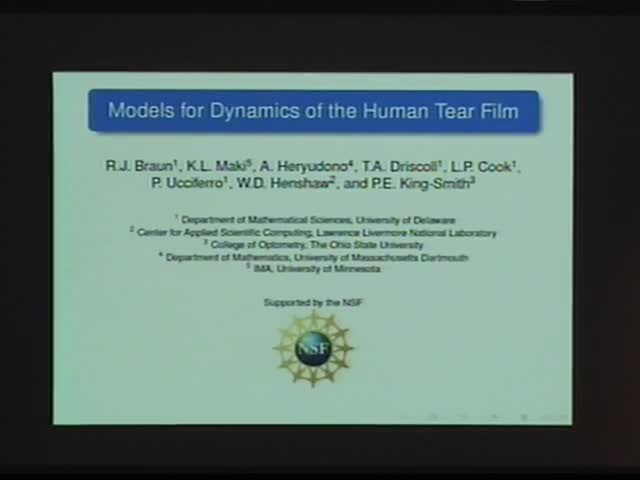Abstract
We study dynamics from models for the human tear film in one and
two dimensional domains. The tear film is roughly a few microns thick over a domain on a centimeter scale; this separation of
scales makes lubrication models desirable. Results on one-dimensional
blinking domains are presnted for multiple blink cycles. Results
on two-dimensional domains are presented for different boundary conditions.
In all cases, the results are sensitive to the boundary conditions; this is
intuitively satisfying since the seems to control the tear film from the boundary and its motion. Quantitative comparison with in vivo measurement
will be given in some cases. Some discussion of tear film properties will
also be given, and results for non-Newtonian models will be given as available,
as well as a wish list for future data and models in this direction.
